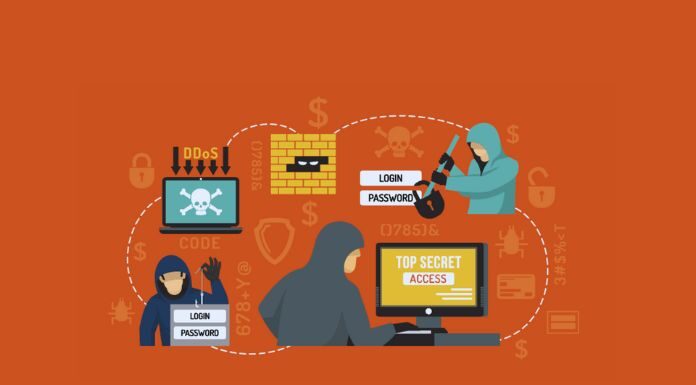You will have noticed it, too: the price of dedicated Internet connections in optical fiber and over-the-radio links has gradually declined in recent years. Are we sure, however, that a decrease does not also match the price reduction in the quality of services?
What if, on the other hand, some “not very crystalline” operators had modified their offers by revising downwards some not very visible elements? Elements such as ancillary services, for example, or the always dear Minimum Guaranteed Bandwidth, latency times, or the SLA. To dispel any doubts, let’s try to understand together what is happening and how to defend ourselves against deceptive offers and “crafty” operators.
What Is Shrinkflation, And How Does It Work?
Have you ever heard of the Shrinkflation phenomenon? If the answer is “no,” let me briefly explain it. Result of the mix between the verb “shrink” (“to restrict”) and the noun “inflation” (“inflation”), the term Shrinkflation identifies a subtle commercial strategy that many producers – especially in the food sector, but not only – have begun to implement adopted for several years and which has the dual purpose of countering the increase in inflation and keeping revenues unchanged.
In practice, according to the principle of Shrinkflation, the “crafty” producer puts on the market a format which, in terms of packaging and price, is identical to the previous versions but contains a smaller quantity of product inside. Thanks to this “trick,” the average consumer, who rarely goes to read the information on the labels, is convinced that he is buying the same product as always at the price he is now accustomed to, when in fact, this is not the case at all! The result will be that the product purchased in the new format will run out sooner, and therefore the consumer will be forced to repurchase it more frequently. A commercial strategy.
Shrinkflation Applied To Telecommunications
Something like this is also happening in TLCs, where low-level connectivity services are “repackaged” as professionals. In most cases, the cost of the supply remains unchanged – or, at most, is only slightly reduced – but on the other hand, all those services and guarantees that distinguish a truly professional connectivity supply from one are eliminated or reduced, which is only modest. Below is some information on dedicated connections that is good to remember and will prevent you from running into bad or very bad surprises.
Point-To-Point And FTTO Connections Are Different
As you should know by now, dedicated Internet connections have a fundamental characteristic: the circuit and the devices are for the specific and exclusive use of the end customer. So, no shared paths and intermediate power stations. Given this, if an operator offers you a supply of FTTO (Fiber To The Office) type connectivity, know that it is not a dedicated line, as it does not provide for direct connection with the operator’s exchange.
The Minimum Guaranteed Bandwidth Must Be 100%
The notorious and essential BMG (Minimum Guaranteed Bandwidth) can only be 100% if an Internet connection is truly dedicated. Be careful, therefore, because if an ISP offers you a dedicated 1 Gbp/s connection, but the Minimum Guaranteed Bandwidth is only 10%, it is very probable that at least 10 other users are already connected to the same exchange. And so “dedicated line” what?
Latency Times Should Be Close To Zero
As correctly reported on Wikipedia, in the language of telecommunications, latency is defined as “the time interval between the moment in which the input/signal is sent to the system and the moment in which its output is available,” and which is dedicated point-to-point links is around 5ms. It follows that if an offer reports a latency well over 5ms, they are not offering you a dedicated Internet connection.
Intervention Times Must Be At Most 4 Hours
As already specified in the past, the SLA (Service Level Agreement) contractually defines the intervention times in the event of a disruption, which, in the presence of a dedicated connection, average around 4 hours. Therefore, if intervention times exceeding 4 hours are indicated in the offer addressed to you, the operator still needs to prepare all those technical and procedural devices useful for keeping the service under control.
Provision Must Include Proactive Monitoring
The circuits and devices a dedicated connection rests on must be monitored constantly. If this were not the case, you could be the victim of continuous failures, which would considerably increase downgrade times. A true project connection always includes the proactive monitoring service, so check that it is included in the offer.
In Addition To The Main Link, A Backup One Must Be Provided
Since no one is perfect and, despite the continuous monitoring of the equipment and circuits, a failure can always happen, it is good that the offer includes the supply of at least one backup line. Or two, just to be sure. The best thing would be for the backup lines to be diversified, for example, one line on shared wireless and another as a KA-SAT link, i.e., satellite.
Never Without An Adequate DDoS Attack Protection System
Being able to promptly prevent and defuse cyber attacks, which are now increasingly frequent, massive, and destructive, is extremely important. Take care, therefore, to verify that the line proposed by the ISP is equipped with a protection system from DDoS attacks so that you can sleep peacefully.
Zero Tickets, But Direct Assistance To The Customer
Offering an assistance service that rests only on a banal call center, which does nothing but open ticket after ticket, cannot be considered “professional.” The operators who supply point-to-point connections allow their customers to communicate directly with those who work on the devices and circuits to intervene in any problems and disservices promptly.
Also Read: Digital Transformation: Why It Matters To Your Business Sector


